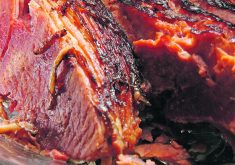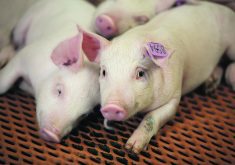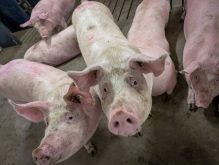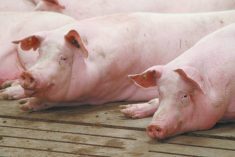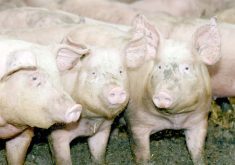Manitoba only has 566 hog farms, but those operations have a massive impact on the economy.
An economic impact report, released Aug. 3, has found that Manitoba’s pork industry contributes $2.3 billion to the province’s gross domestic product, which represents about 3.5 percent of Manitoba GDP.
The industry employs 22,000 people and handles 55 percent of the agri-food manufacturing jobs in Manitoba.
Cam Dahl, Manitoba Pork Council general manager, said he’s confident in the figures.
“The numbers are deliberately conservative,” Dahl said during a virtual press event Aug. 3.
Read Also

Huge Black Sea flax crop to provide stiff competition
Russia and Kazakhstan harvested huge flax crops and will be providing stiff competition in China and the EU.
Serecon, a consulting firm from Alberta, studied the economic impact of Manitoba’s pork sector and authored the report.
Manitoba Pork wanted the data, partly to use as talking points when meeting with policy makers and community leaders in the province. Plus, a provincial election is expected for Manitoba this fall.
“This will be a key point for us, to show exactly what the industry has done. And what it would like to continue to do, going forwards,” said Rick Préjet, Manitoba Pork chair.
In the report, Serecon looked at the history of the pork industry and how it’s developed.
In 1951, 33,007 farms in Manitoba had pigs. By 2021, that number was 566.
“The average number of pigs per farm reached its highest point (in 2021) at 3,455,” Serecon said.
The number of hog farms has shrunk, but the cash receipts of those farms are not small.
Farm cash receipts from hogs are bigger than cattle in Manitoba and are a close second behind wheat.
“The five-year average (2018-22) farm cash receipts from hog farming are $1.2 billion,” Serecon said.
Manitoba has two large slaughter plants for hogs — Hylife Foods in Neepawa and the Maple Leaf plant in Brandon. There are smaller plants in Winkler and near Steinbach, but 90 percent of pigs are processed in Brandon and Neepawa.
Manitoba accounted for 23 percent of the hogs slaughtered in Canada, at 4.96 million. That compares with Ontario at 5.4 million and Quebec at 7.19 million.
The number of hogs processed in Manitoba increased from 3.68 million in 2007 to 4.96 million in 2022, a 35 percent increase.
A percentage of that pork from those plants is consumed in Canada, but a sizable share is exported. In 2022, Manitoba’s exports of fresh, chilled or frozen meat were $1.2 billion and cured meat exports were $87.5 million.
The main export destinations were Japan (40.3 percent), the United States (27.4 percent), China (9.6 percent) and Mexico (9.5 percent).
“Japan has consistently been Manitoba’s most valuable export market for fresh and frozen pork products,” Serecon said.
The province also exported $256 million worth of live hogs in 2022.
During a session with media, reporters asked about the challenges facing the industry — such as the shortage of ag labour, the costs of building new barns, other countries passing regulations that threaten Manitoba’s pork exports and the possibility of slaughter plant closures.
Dahl and Préjet acknowledged the risks.
However, they believe Manitoba’s pork industry has staying power.
“Manitoba is a really good place to (raise) pigs,” Dahl said. “We have a competitive advantage because of our access to the U.S. We have a competitive advantage because of our access to feed…. On top of that, we’ve seen the investment from the processors and the value added (firms).”
As an example, last month Winkler Meats announced a partnership with Johnsonville, a major sausage maker in the U.S. The two companies are spending $52 million to expand the Winkler Meats processing plant in Winkler, Man., which will increase the number of sows slaughtered in Canada.
The critical mass of pig production and processing capacity encourages further investment in Manitoba’s hog sector, Dahl added.
“That capacity (is) continuing to grow in Manitoba, which is part of our competitive advantage…. That advantage isn’t going away.”






